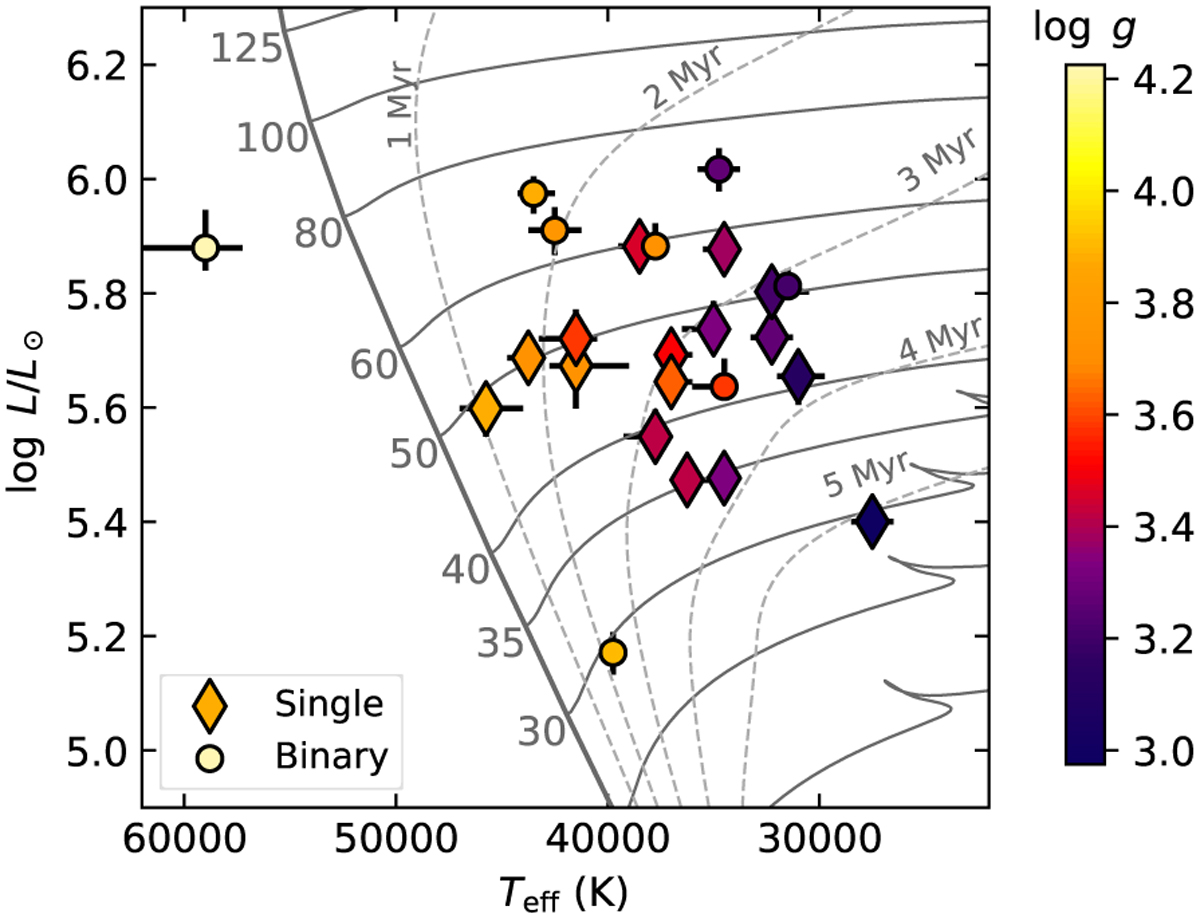Fig. 2

Download original image
Our sample stars in the HRD. Presumed single stars are indicated with diamonds; suspected binaries with circles. The colour of each marker corresponds to its surface gravity, where lighter colours correspond to higher values. As expected, a trend in surface gravity is seen as a function of temperature and age, which are correlated: more evolved stars are cooler and have lower surface gravity, implying a larger radius. In the background, evolutionary tracks (solid lines) and isochrones (dashed lines) of the grids of Brott et al. (2011) and Köhler et al. (2015) are shown (initial rotation rates: 170–200 km s–1). The vertical solid line indicates the position of the ZAMS; numbers on the left of the ZAMS refer to the initial mass of each model. The figure shows that our sample stars have an initial mass in the range ≈25–75 M , and an age of 1–5 Myr. One source, LH 114-7, lies on the blue side of the ZAMS; we cannot estimate its age and mass from this HRD (but see Fig. 3).
Current usage metrics show cumulative count of Article Views (full-text article views including HTML views, PDF and ePub downloads, according to the available data) and Abstracts Views on Vision4Press platform.
Data correspond to usage on the plateform after 2015. The current usage metrics is available 48-96 hours after online publication and is updated daily on week days.
Initial download of the metrics may take a while.


